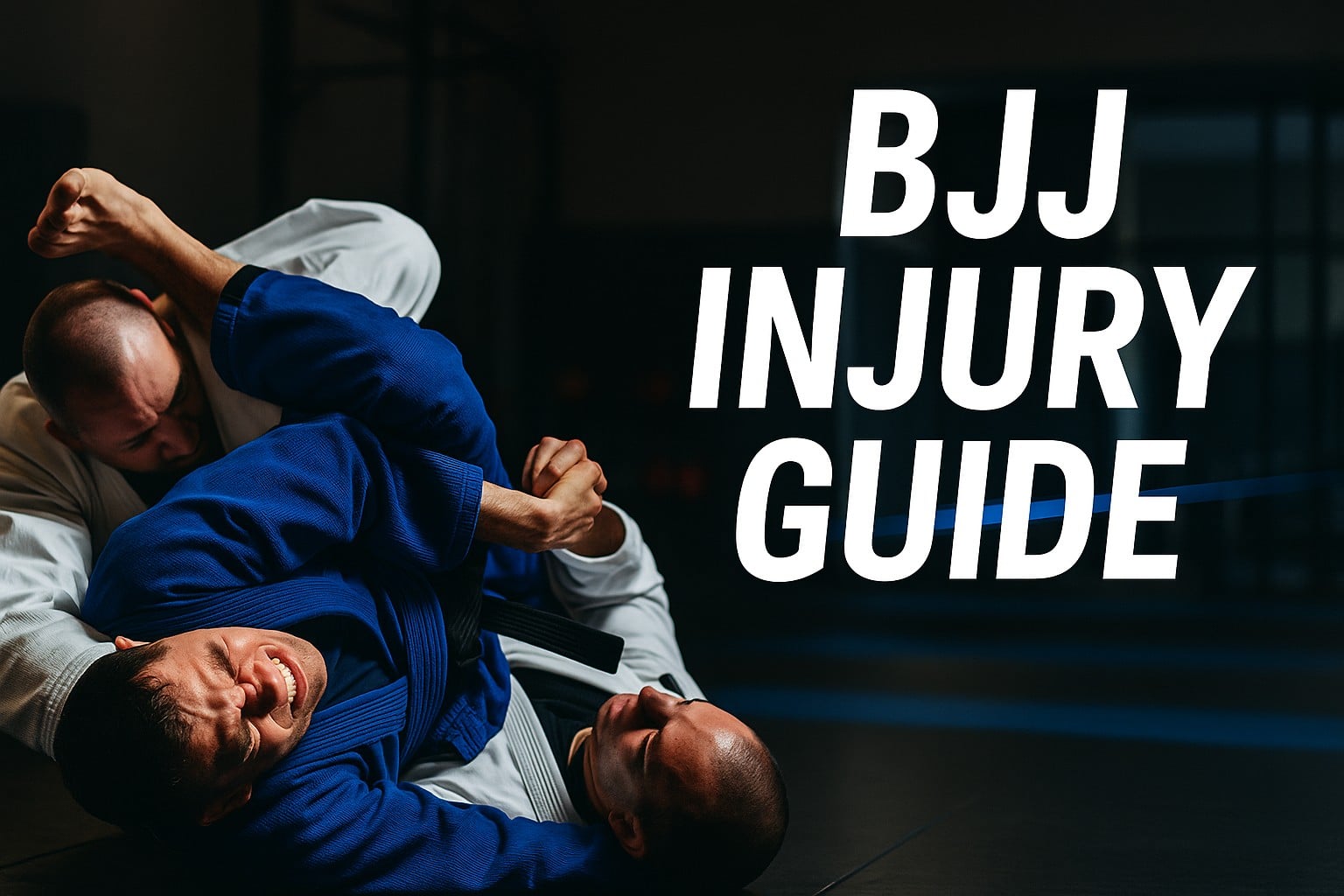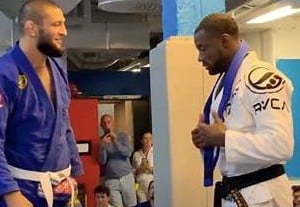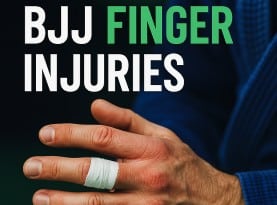BJJ Injuries: Common Types, Causes, Treatment, and Prevention
Brazilian Jiu Jitsu is a dynamic grappling art that challenges the body in unique ways. While tapping submissions is part of the game, the repetitive strain, twisting pressure, and occasional impact inherent to rolling can lead to a variety of injuries. Understanding the most common injuries—why they occur, how to treat them, and how to prevent them—helps practitioners train more safely, recover more effectively, and stay on the mats longer.
Most Common Injuries in Brazilian Jiu Jitsu

Finger and Wrist Injuries
Finger sprains, tendonitis, and occasional fractures are extremely common due to constant gripping of the grip and wrist torques during submissions and sweeps.
How and why they happen: Repetitive gripping strains tendons; sudden twisting or hyperextension during escapes or submissions can overload small joints.
Immediate care: Follow the RICE protocol (rest, ice, compression, elevation), buddy-tape the fingers, and immobilize with a splint if necessary. Consult a physician for suspected fractures.
Rehabilitation: Begin with gentle range-of-motion exercises within pain-free limits, progressing to isometric grip squeezes, then eccentric wrist curls and finger-extension bands to restore strength and flexibility.
Shoulder Injuries
Rotator cuff strains, labral tears, and impingement occur from armbar hyperextension, Kimura locks, and taking falls without proper technique.
How and why they happen: Over-rotation and forced extension of the shoulder joint under load compromise soft tissues; poor scapular control exacerbates the issue.
Immediate care: Apply ice, use a sling for comfort, avoid overhead movement, and seek medical imaging for persistent pain or weakness.
Rehab: Start with pendulum exercises and scapular retractions, then introduce rotator cuff isometrics, progressing to theraband external and internal rotation exercises, and overhead presses with strict form.
Knee Injuries
Sprains of the MCL or meniscus tears are common when twisting under guard, defending leg locks, or during takedowns.
How and why they happen: Rotational forces and valgus stress on the knee in heel-hook positions or misaligned takedown landings overstretch ligaments and cartilage.
Immediate care: Use the RICE method, brace the knee, and avoid weight-bearing if the knee is unstable. Obtain an MRI for suspected tears.
Rehab: Focus on quad and hamstring strengthening, closed-chain exercises (e.g., wall sits), proprioceptive drills (balancing on unstable surfaces), and gradual return to drilling.
Learn more with our in-depth article about knee injuries in BJJ.
Neck Strains
Cervical muscle strains and “stingers” happen when defending chokes or neck cranks with poor posture.
How and why they happen: Sudden lateral flexion or axial loading of the cervical spine under resistance causes soft-tissue damage.
Immediate care: Limit movement, apply ice for the first 48 hours, then heat, and avoid further rolling until pain subsides.
Rehab: Perform chin-tucks, isometric holds in flexion and extension, gentle cervical mobility drills, and strengthen deep neck flexors before resuming intensity.
Lower Back Strains
Muscle strains in the lumbar region arise from excessive bridging, scrambling, or poor spinal alignment during takedowns.
How and why they happen: Repetitive hyperextension and rotational movements without core stability overload the lumbar muscles.
Immediate care: Rest from aggravating movements, apply ice (then heat), and use NSAIDs as needed.
Rehabilitation: Emphasize core stability exercises (such as planks and dead bugs), glute activation drills, hip flexor stretches, and gradually reintroduce dynamic movements.
Elbow Injuries
Hyperextensions, tendonitis (e.g., “tennis elbow”), and UCL sprains can occur from improper armbar finishes, straight-arm locks, or bracing falls.
How and why they happen: Forced elbow extension under load or repeated bending against resistance can overstress the ligaments and tendons around the joint.
Immediate care: Rest the elbow, apply ice for 15–20 minutes several times a day, compress with an elastic sleeve, and avoid movements that provoke sharp pain.
Rehab: Begin with gentle range-of-motion flexion and extension drills, progress to isometric holds at various angles, then use light dumbbell curls and triceps extensions, finishing with eccentric exercises to rebuild tendon resilience.
Tennis and Golfer’s Elbow
Tennis Elbow (Lateral Epicondylitis): Overuse of the wrist extensors during gripping and intense gripping movements strains the tendons on the outer elbow.Golfer’s Elbow (Medial Epicondylitis): Repetitive wrist-flexion and forearm pronation in grips and specific guard-retention movements overload the tendons on the inner elbow.How and why they happen: Constant gripping, twisting under pressure, and resisting opponents’ grips create microtears in the tendon attachments at the epicondyles.Immediate care: Rest the elbow, apply ice for 15–20 minutes several times a day, use a counterforce brace or elastic sleeve, and avoid movements that provoke sharp pain.Rehab:
- Phase 1: Gentle range-of-motion flexion/extension and forearm pronation/supination within pain-free range.
- Phase 2: Isometric holds at various angles for both flexors and extensors.
- Phase 3: Eccentric strengthening with light dumbbells or resistance bands (slow lowering of wrist curls and extensions).
- Phase 4: Progressive grip-strength exercises (rice bucket digs, grip trainers) and sport-specific drills once pain-free
Cauliflower Ear
Repeated trauma to the ear’s cartilage leads to hematoma formation and fibrotic deformity.
How and why it happens: Friction and blows during grappling traumatize the perichondrium, allowing fluid to separate cartilage layers.
Immediate care: Aspirate the hematoma within 24–48 hours, apply compressive dressings to prevent fluid reaccumulation, and keep the ears clean.
Rehab: Wear protective headgear during rolling, maintain compression for a week, and monitor for signs of infection.
How to Avoid Getting Injured
- Thorough Warm-Up and Mobility: Engage in dynamic stretches, joint rotations, and sport-specific movements to prepare connective tissues and improve range of motion.
- Proper Technique: Master fundamental positions before submissions, control pressure, and emphasize alignment to reduce undue stress on joints.
- Progressive Training: Increase intensity, volume, and complexity gradually; vary training partners to expose your body to different forces.
- Strength and Conditioning: Develop balanced strength, particularly in the core and stabilizer muscles, while maintaining flexibility through regular mobility exercises.
- Listen to Your Body and Tap Early: Recognize pain as a warning sign; tapping before the point of painful resistance prevents structural damage.
The Most Important Factor to Prevent Injuries
Prioritizing sound technique and body awareness above all else is the single most effective way to avoid injuries. Focusing on proper mechanics, positioning before submission, combined with early taps, ensures that neither excessive force nor risky positions compromises your joints and soft tissues.
Recommended Reading
- Find and read reviews of the top Brazilian Jiu Jitsu instructional videos.
- Which is the best way to learn BJJ? Please read our guide on How to Learn BJJ.




